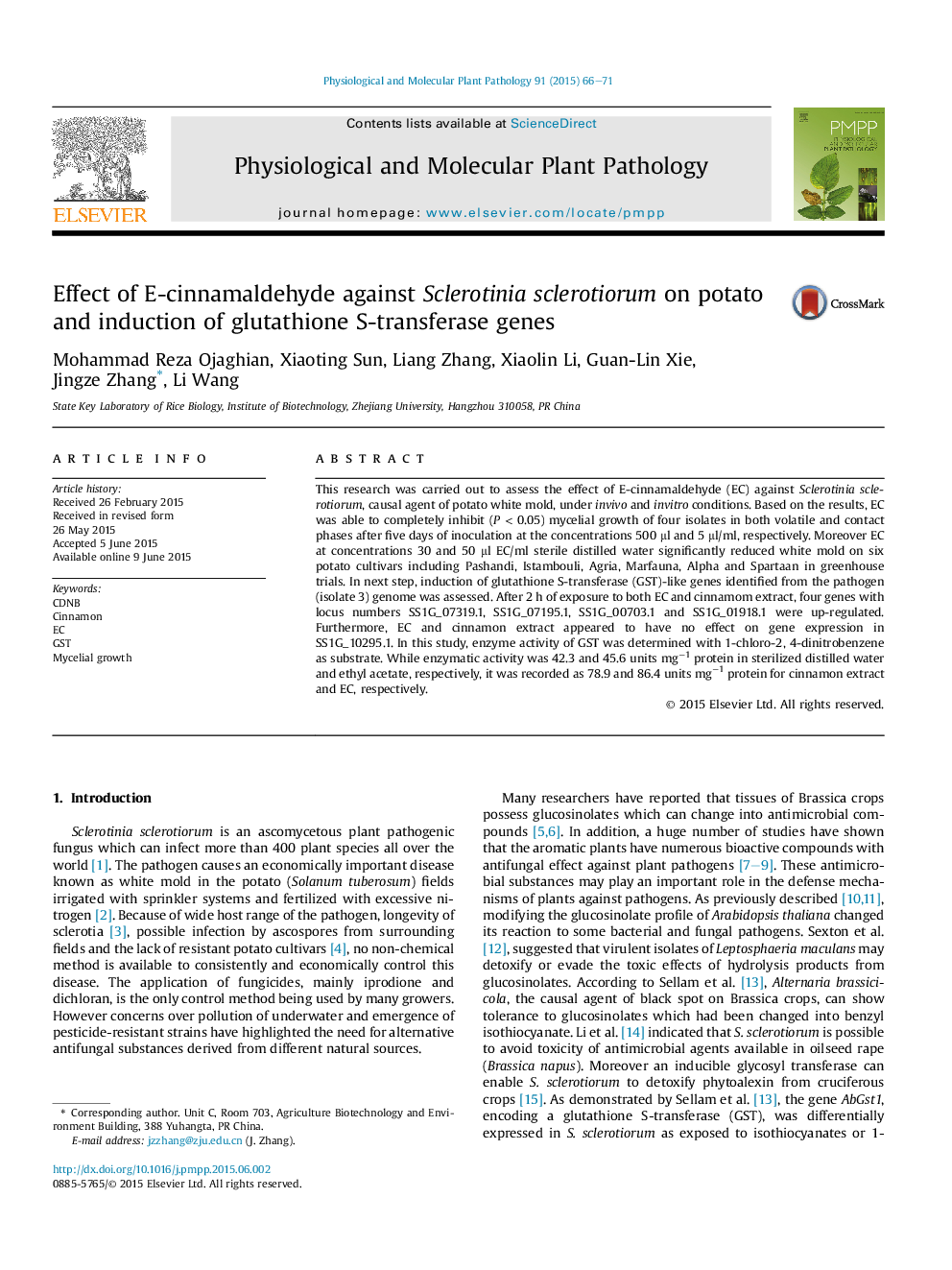| Article ID | Journal | Published Year | Pages | File Type |
|---|---|---|---|---|
| 2836264 | Physiological and Molecular Plant Pathology | 2015 | 6 Pages |
•E-cinnamaldehyde was able to inhibit mycelial growth of Sclerotinia sclerotiorum.•E-cinnamaldehyde reduced white mold on six potato cultivars in greenhouse trials.•E-cinnamaldehyde up-regulated four glutathione S-transferase (GST)-like genes.•E-cinnamaldehyde and cinnamon extract significantly increased enzyme activity of GST.
This research was carried out to assess the effect of E-cinnamaldehyde (EC) against Sclerotinia sclerotiorum, causal agent of potato white mold, under invivo and invitro conditions. Based on the results, EC was able to completely inhibit (P < 0.05) mycelial growth of four isolates in both volatile and contact phases after five days of inoculation at the concentrations 500 μl and 5 μl/ml, respectively. Moreover EC at concentrations 30 and 50 μl EC/ml sterile distilled water significantly reduced white mold on six potato cultivars including Pashandi, Istambouli, Agria, Marfauna, Alpha and Spartaan in greenhouse trials. In next step, induction of glutathione S-transferase (GST)-like genes identified from the pathogen (isolate 3) genome was assessed. After 2 h of exposure to both EC and cinnamom extract, four genes with locus numbers SS1G_07319.1, SS1G_07195.1, SS1G_00703.1 and SS1G_01918.1 were up-regulated. Furthermore, EC and cinnamon extract appeared to have no effect on gene expression in SS1G_10295.1. In this study, enzyme activity of GST was determined with 1-chloro-2, 4-dinitrobenzene as substrate. While enzymatic activity was 42.3 and 45.6 units mg−1 protein in sterilized distilled water and ethyl acetate, respectively, it was recorded as 78.9 and 86.4 units mg−1 protein for cinnamon extract and EC, respectively.
